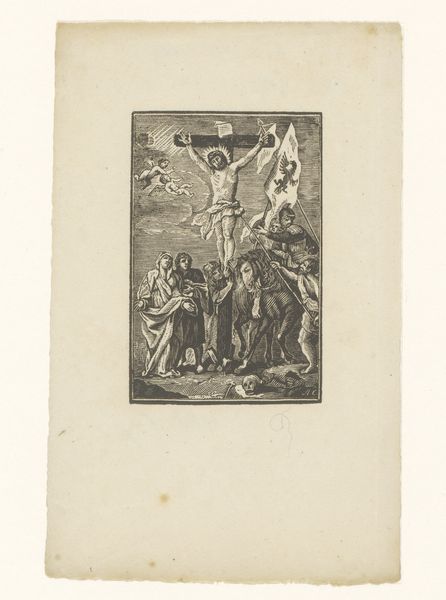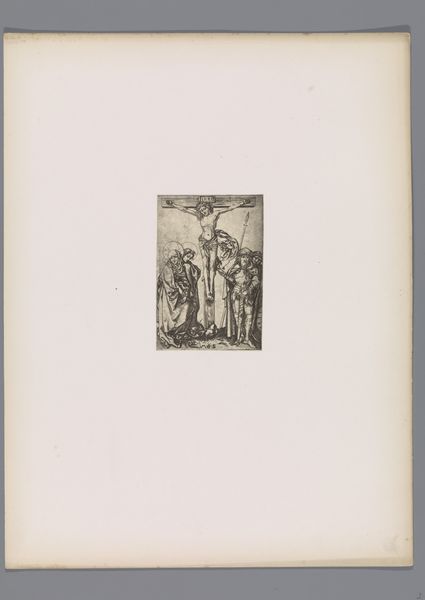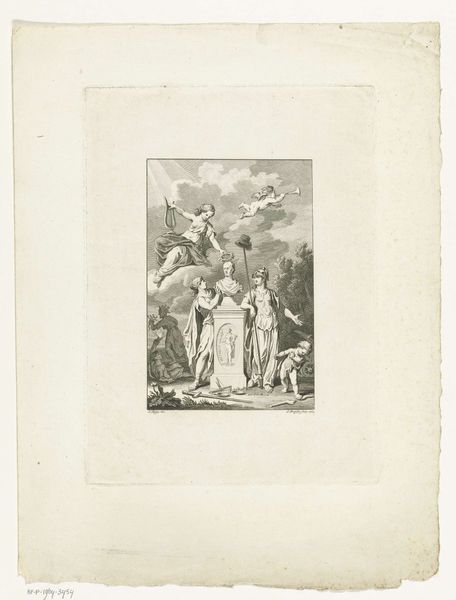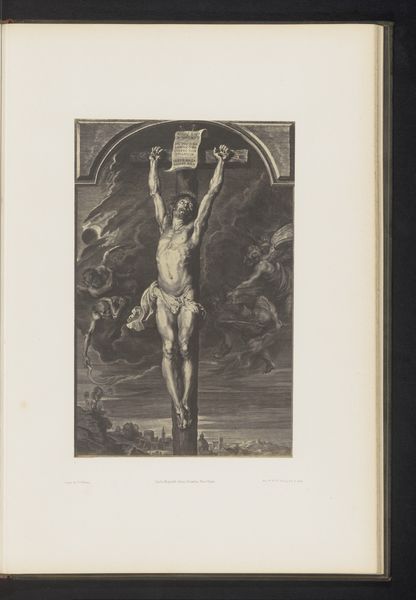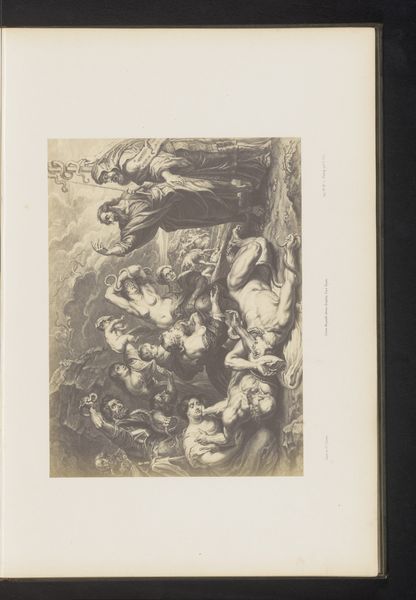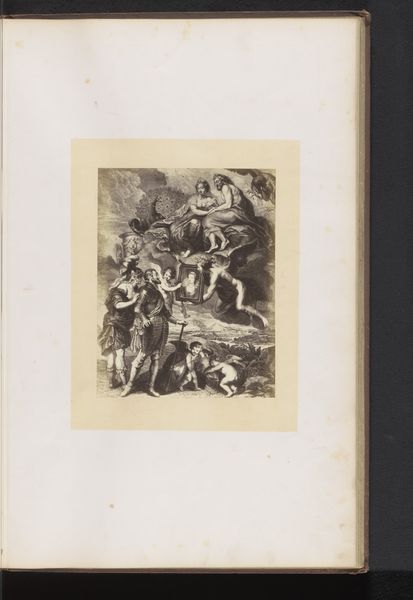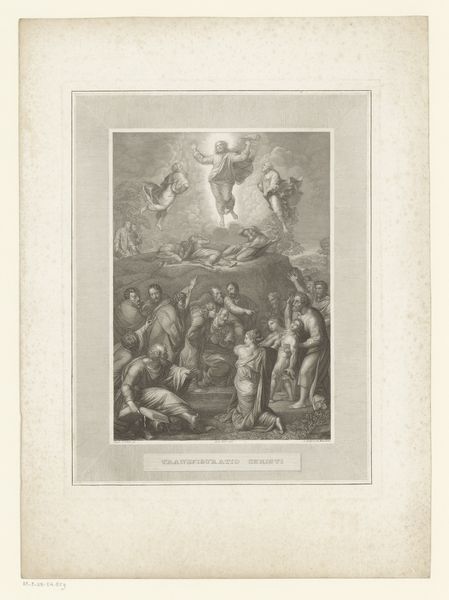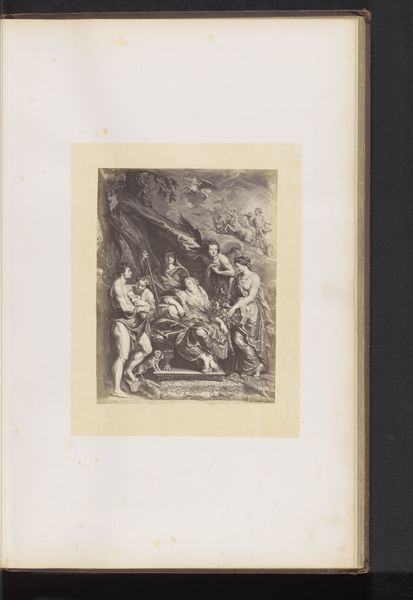
Fotoreproductie van het schilderij De kruisiging door Paolo Veronese before 1875
0:00
0:00
anonymous
Rijksmuseum
print, photography
# print
#
landscape
#
figuration
#
photography
#
history-painting
#
italian-renaissance
Dimensions: height 232 mm, width 172 mm
Copyright: Rijks Museum: Open Domain
Editor: This is a photographic reproduction of Paolo Veronese's "The Crucifixion," made before 1875. Even in monochrome, the drama is evident. It feels monumental despite the smaller scale of the print. What do you see in this piece? Curator: The cross. Not just the object itself, but the profound symbol it has become. Here, we witness a crystallization of centuries of faith and cultural memory. Notice how the figures at the base cluster, mirroring the shape of the cross while simultaneously expressing human grief. Do you see any symbolism in their postures? Editor: Perhaps their closeness represents comfort amidst suffering, like a visual echo of unity in despair? Curator: Precisely. The composition directs our gaze upwards to the central figure and the instruments of death—yet even there, subtle cues lead us back down, anchoring us to human empathy. Veronese’s original composition served as a visual catechism, layering theological significance onto observable reality. The figures, the light, all point toward divine tragedy. But in the symbolism, there’s resilience, too. Editor: That connection between the human and divine...I hadn't considered how actively the composition works to reinforce it. Curator: The image’s symbolic power has persisted, precisely because it transcends mere historical record; it touches upon universal themes of sacrifice, suffering, and hope. Reproductions like these aided in the widespread dissemination of religious iconography, and played a key role in the codification of visual representations of biblical stories. They served to remind all the beholders the cultural narrative which has defined Europe for centuries. Editor: I'll certainly look at religious paintings differently now, understanding better the symbols at play and the powerful impact across cultures and generations. Curator: Indeed, understanding how these images functioned historically enhances our contemporary engagement.
Comments
No comments
Be the first to comment and join the conversation on the ultimate creative platform.
